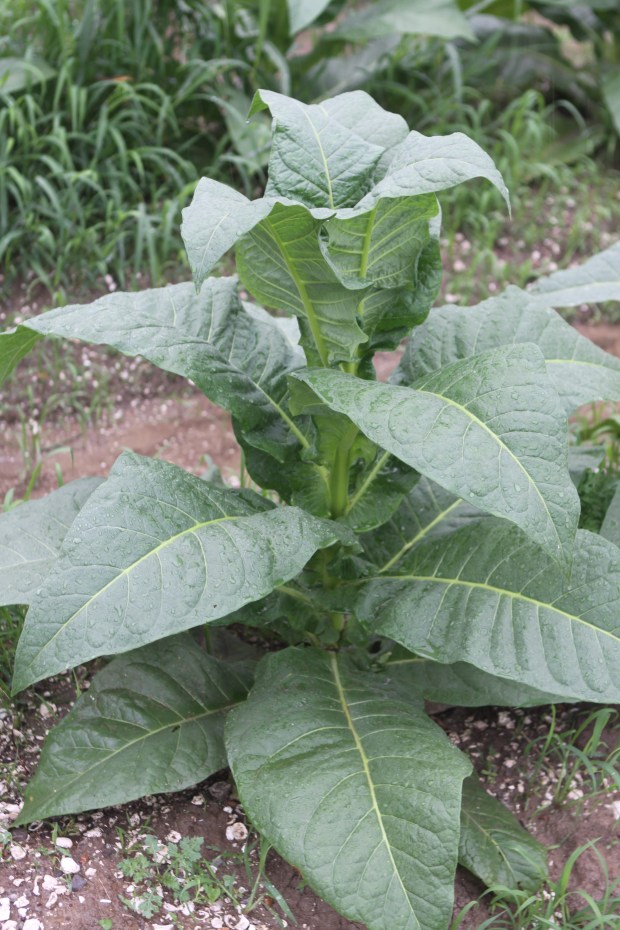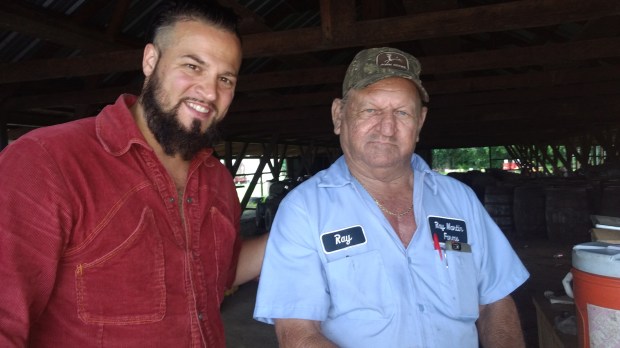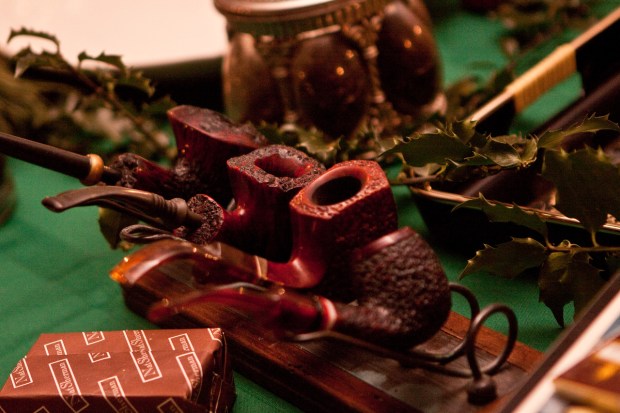Ray Martin pulls out a greasy, inky black mass of tobacco and offers it to me. It looks like a decomposing eel that’s been caught in an oil spill. This is perique: the really good stuff, the truffle of tobaccos.
I twist off a small piece and roll it into a golf ball–size wad. Once the perique is tucked tightly into my left cheek, the skin inside my mouth tingles like it has just been smeared with Icy Hot. I press my molars down a bit, and the leaves release their fermented juice. I breathe out through my nose and smell notes of charred oak, pepper, and fig. My scalp begins to tingle, too. The nicotine buzz is strong, quick, and soothing. The high extends to my gut and limbs, and I’m thankful I didn’t chew the potent leaf on an empty stomach.
As my mouth fills with tobacco juice, I stroll out onto the grass and spit.

Martin is one of the legendary Percy Martin clan, a family of farmers who have lived in this part of Louisiana for generations. Percy, Ray’s father, is remembered for saving perique from near extinction. He died in 2012, at 93, and Ray has since taken over the family business.
Today Martin’s farm, one of around 25 perique growers in St. James Parish, sells its entire crop of perique to Reynolds American, which manufactures Natural American Spirit cigarettes. He says that depending on how the crop does, the yield is anywhere from 100 to 200 barrels of tobacco a year (a barrel contains 500 pounds of tobacco).
Genuine perique grows exclusively in St. James Parish, an expansive swath of farmland 40 minutes west of New Orleans, and is widely considered to be the rarest commercially grown tobacco in the world.
Prized for its pungent notes of fermented fruit and vinegar, perique can be too strong to be smoked by itself; so it’s often used to enhance the flavor of other tobaccos. The Acadians, who arrived in Louisiana in the late 1700s, are credited with developing the strain’s unique fermentation process. Native Americans historically layered tobacco leaves in hollowed-out tree trunks and sealed them under heavy stones. In the 1820s a farmer named Pierre Chenet adapted the process, using wood boxes instead. In the early 1900s, farmers began fermenting the leaves in whiskey barrels.

“Perique is so incredibly glorious,” says tobacco expert Russ Ouellette. “If you were to simply air-cure the leaves in a barn, it would be a fairly neutral tobacco, like a barley, but once that pressure is [applied] and cell walls start bursting, magical things happen.”
If Chenet is the father of perique and Percy Martin its savior, Mark Ryan, owner of Daughters & Ryan, is the favorite son. In 2005 he purchased L.A. Poche Perique Tobacco, one of the only facilities that produces St. James perique for individual consumption. At the time of Ryan’s purchase, the plant produced just 500 pounds of finished perique a year; today it has an annual output of 80,000 pounds. Ryan says the secret to his success is getting to know the farmers and paying them fairly.
My love affair with the rarest of tobaccos began when I was a teenage pipe smoker. I quickly graduated from the artificially encased cherry and vanilla concoctions to the natural musky, smoky stuff. With a single puff, tobaccos like the fire-cured Latakia (named for the Syrian port city) transported me to the distant lands I hoped someday to visit.

My love for funky, dark perique goes beyond an appreciation for its novelty. I’ve discovered that it can be pulverized in a coffee grinder and snorted (nothing shakes up iPhone–glazed rush-hour commuters on the 5 train like a man vigorously snorting pinches of brown powder up his nose). It also be made into a biting aquavit: Try steeping the leaves for two weeks in a neutral spirit. I have friends who have made cheesecakes, crème puffs, perfumes, or jerked pork flavored with the tobacco world’s most revered condiment.
While it’s always fun to experiment, I still enjoy perique best when I smoke it straight out of my oldest meerschaum pipe on a crisp autumn day.